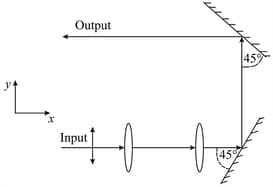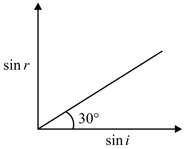EASY
Earn 100
A parallel beam of light, linearly polarized along the y-axis, passes through a combination of convex lenses and mirrors as shown in the figure. The output beam


(a)will be polarized along the -axis
(b)will be polarized along a line making an angle of with the axis
(c)will be polarized along the -axis
(d)will be unpolarized
100% studentsanswered this correctly
Important Questions on Wave Optics
EASY
EASY
EASY
EASY
EASY
EASY
EASY
EASY
EASY
EASY
EASY
A transparent medium shows relation and as shown. If the speed of light in vacuum is the Brewster angle for the medium is

EASY
EASY
EASY
MEDIUM
EASY
EASY
EASY
EASY

